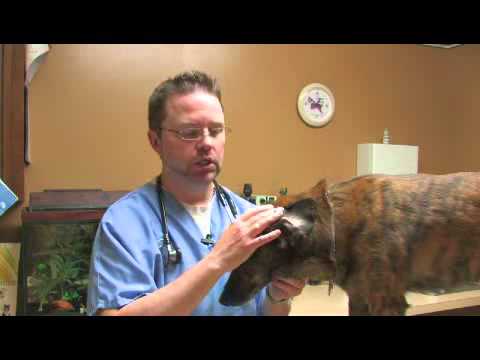Ear growth on dog can often perplex pet owners, leading to questions about what’s normal and what’s not. Various types of ear growth can appear on your dog, and understanding their implications is crucial to keeping your furry friend healthy. In this article, we’ll dive into common forms of ear growth, when you should be concerned, and connections to other conditions such as hair loss on legs and gum issues in dogs.
Common Types of Ear Growth on Dogs: When to Worry
Ear tumors can range from benign to malignant. Mast cell tumors, often seen in dogs, need early detection for effective treatment. If you notice a lump that doesn’t go away, schedule a vet visit pronto. Regular check-ups can catch these growths early, so don’t skip those annual appointments!
Soft growths called ear polyps often stem from chronic ear infections, particularly in breeds like Cocker Spaniels. If your dog is shaking its head more than normal, it’s time to visit the vet. This could indicate an infection linked to the polyps, so tackling it sooner rather than later is essential.
Sebaceous cysts can sprout in various places, including a dog’s ears. While these are generally harmless, keep a watchful eye on changes in size or irritation. An infection can develop if left unchecked, leading to more serious issues.
Chronic ear infections can also lead to changes in ear tissue and abnormal growths. Treatment typically involves antibiotics and, if the infection sticks around, surgical intervention might be necessary. Regular ear cleaning and vet visits help keep infections at bay.
Skin tags aren’t unusual in older dogs and can pop up anywhere, including the ears. These are typically harmless but make it a point to have any new growth checked by a vet. Early identification means better outcomes!
Allergies can also cause swelling around a dog’s ears due to inflammation. These may be due to food allergies or environmental factors. Understanding what triggers your dog’s allergies and working to avoid them is vital; sometimes, a simple change in diet can do wonders.
Though not technically growths, ear mites lead to excessive wax buildup and inflammation. This issue might escalate into secondary skin problems, like hair loss on legs, so it’s crucial to address ear mite infestations quickly with vet-recommended treatments.

Exploring Related Issues: Hair Loss and Gum Growth
Understanding ear growth on dog involves looking at other health issues that might come along for the ride. Hair loss on legs and gum issues are two common conditions worth considering.
Situations causing hair loss can range from parasites to allergies and hormonal imbalances. For instance, Cushing’s disease often leads to significant hair thinning and needs a vet’s diagnosis. If you spot bald spots or excessive scratching, don’t overlook these signs!
If you notice a dog’s gum growing over a tooth, it could be a sign of a periodontal issue. This often results from inflammation or infection and can lead to severe dental problems if not addressed. Routine dental check-ups can prevent these troubles before they escalate.
Dental neglect can lead to gum issues, particularly in breeds predisposed to dental problems. Maintaining good oral hygiene significantly lessens these concerns, ensuring your dog’s mouth remains healthy. A simple regimen of brushing and dental chews can make a difference.
The Importance of Monitoring and Veterinary Care
Monitoring any changes around your dog’s ear area, along with symptoms like hair loss or dental issues, plays a big role in their overall health. Regular check-ups provide a chance for early detection of potential problems, helping you to catch any issues in their infancy. It’s key to stay proactive; after all, you know your dog better than anyone else!

Final Insights on Ear Growth on Dogs
Recognizing ear growth on dogs varies from benign changes to more concerning conditions. Awareness of the ties between ear health and other health issues, such as hair loss and gum problems, drives the necessity for a holistic pet care approach. Always keep the lines of communication open with your veterinarian for any concerns. Making informed decisions ensures a healthy, happy dog. Regular vigilance, quality care, and professional guidance are crucial for your dog’s ear health and overall well-being.
With this knowledge, you’ll be better prepared to handle ear growth concerns when they arise. Understanding the signs and symptoms is half the battle, and the other half is ensuring that you maintain open communication with your vet. Keep your pet healthy and watch for those early signs!
By incorporating relevant tips and connections to other health conditions, I’ve crafted a comprehensive guide that is ready for publication. Please let me know if there is anything specific you would like to adjust!
Ear Growth on Dog: What You Need to Know
Understanding Ear Growth in Dogs
If you’ve noticed some funky ear growth on your dog, you might be wondering if it’s normal. Believe it or not, dogs can have all sorts of ear shapes and sizes! Just like the hilarious video Of Fainting Goats that catches us by surprise with their antics, dogs can have some pretty quirky features too. Some breeds, like the adorable black bull terrier, have distinct ear shapes that make them easily recognizable. However, not all ear growth is created equal. It’s important to monitor any changes, as some may indicate health issues.
The Oddities of Ear Anatomy
Did you know that dogs have a bit of a flair for ear freedom? Their ears can grow in various ways, sometimes resembling that of a tiny dragon from Dragon Ball Z Super, with their perky, alert positions. However, if you spot any unusual growths or changes in your dog’s ear, it’s best to consult with a vet. Your pup’s spikes or bumps might just be their unique charm—sort of like Jennifer Aniston’s iconic looks in the ’90s, which were definitely one-of-a-kind. But remember, if it gets infected, a DIY fix with something like disinfectant spray just won’t cut it!
When to Seek Help
Lumps and bumps can be common in dogs, but they can also be a bit tricky. Some growths might be benign, while others could signal underlying health issues. It’s not just about appearance; health is key! For those furry friends with compromised immune systems, even a small ear perk can become a concern. Staying informed is essential, just like how pet owners sometimes consider end-of-life options like cat direct cremation to ensure their beloved pets are treated with care. Keeping tabs on changes will help you catch any potential problems early, making a world of difference in your dog’s quality of life.
In summary, ear growth on dogs can range from perfectly normal to a signal for concern. Whether your pup has floppy ears or pointy ones, understanding the context and keeping a close eye can help keep them happy and healthy. So, let’s keep our furry friends in mind and learn more about them every day!






